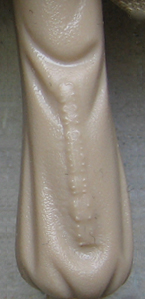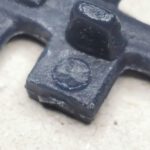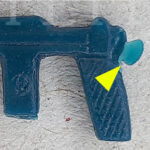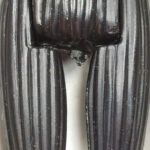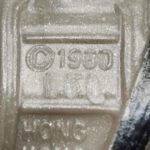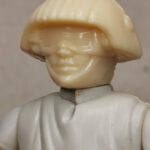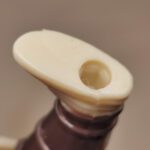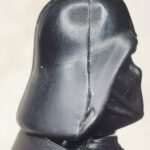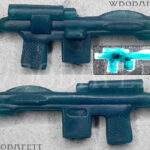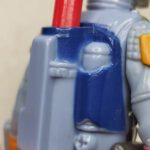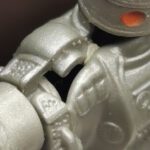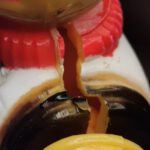101 Reference Guide
Chihuahua
TABLE OF CONTENTS
This is intended to be a quick reference guide written in very plain and easy to understand text. For an expanded and more advanced version of the below, click through to read the “Introduction to COOs” article written by Wolff.
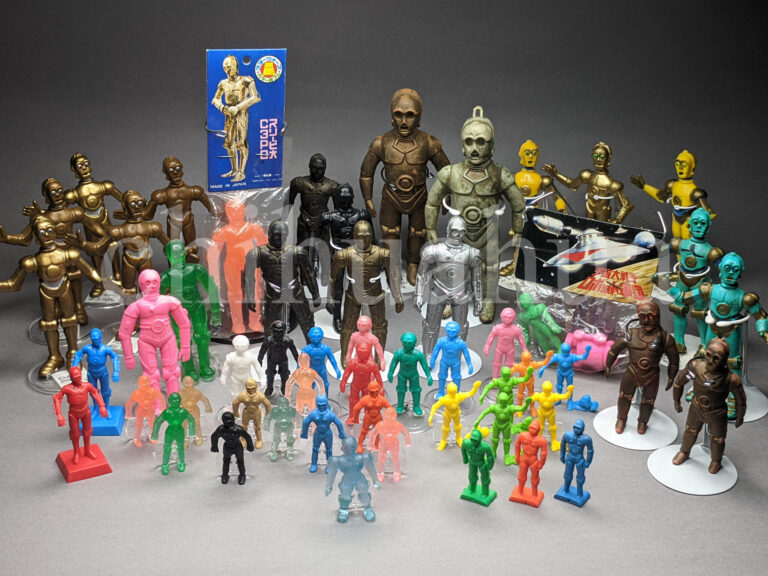
Vintage
Vintage in the SW context relates to items from the original era of 1977 to the end of the 80s. This timeline encapsulates Kenner preproduction through to the Brazilian Glasslite and bootleg figures produced in the late 80s.
Modern
“Modern” in the context of Vintage SW collecting refers to the 90s onwards. This includes the POTF2 line, Bend-Ems and everything beyond that. However, there’s a linguistic glitch on the horizon with these early 90s pieces, some of which are now more than 20 years old – the definitive threshold – also technically now “vintage” though not considered so by original vintage collectors.
Founded in 1946 and based in Cincinnati, Ohio, Kenner is the brand who acquired the licence to produce Star Wars action figures in 1976. During the SW era, the Kenner company was owned by General Mills (acquired in 1967). Parent companies changed from Kenner Parker Toys in 1985, to Tonka (1987) before being acquired by Hasbro (1991). Kenner as a separate entity was closed in the year 2000 and the lines were absorbed by the parent company of Hasbro.
Variants
Figures are all variants of one other. In collecting circles, there’s a tendency to refer to anything that’s not a Kenner figure as variant, but this is incorrect. Standard Kenner figures produced between the different Asian factories do vary. Figures produced at the SAME FACTORY, but from a different batch do vary. Whether it’s the sculpt or paint, any production difference qualifies as a variation. It’s important to be considered a variant it’s factory made and not a result of aging. Factory errors or plastic degradation are not considered a variation.
MOC (Mint on card)
A popular hobby acronym used to abbreviate what is essentially a carded figure with the bubble still sealed and intact.
Pre-production or “Preprod”
A physical item created during the early planning process leading to the production of an item. This could entail drawings, sculpts, hard copies, moulds etc. The specifics of the production process goes beyond the scope of this 101 guide, but check out Wolff’s advanced knowledge guide HERE or Chris Georgoulias’s “Making of an Action Figure” guide HERE for an in-depth guide to the pre-production process.
Bootlegs
During the late 70s and early 80s, for a variety of geopolitical and commercial reasons, many countries across the world didn’t have access to licensed Star Wars toys. In these cases, independent operators stepped up and produced low-cost Star Wars toys which were an alternative to the children of those countries. As there was no license obtained by the producers, these toys have earned the title of “Bootlegs”. The hobby rightly views these as legitimate vintage items. Bootlegs can be easily differentiated from the original Kenner line and are not to be confused with recently made “Copycat” or “Reproduction” figures which are intended to deceive collectors.
Reproduction, “Repro” or Fakes
This is a copy of a figure, decal, part or accessory which is intended to replace a vintage era piece, like-for-like with a recently made one. Repro has been around since the mid-90s and for much of that time was easy enough to distinguish from original. Around 2017 unscrupulous repro makers crossed a line and deliberately targeted rare figure and accessory sculpts with duplicates which were intended to deceive collectors of original vintage pieces.
Degradation or Discolouration
Where the plastics, paint, paper or fabric on our vintage items change at a molecular level resulting in a shift in colour from the original. This is down to factors such as excessive exposure to UV (sunlight), changes in temperature or exposure to chemicals.
Grading
Grading companies offer a service whereby they will award a score to a figure, box or playset based on the condition. Each company has it’s own system, but generally 90 being the highest score possible. The item is then sealed in a clear acrylic case with the grading label visible. This whole practice of awarding a grade is completely subjective and across the board has proven to be problematic in the areas of authentication, preservation and accuracy.
“Bleaching”
Plastics can be temporarily whitened in a process called bleaching. It is established that the polymers in the plastic will return revert back to their original yellowed state after a few years. Worse still, the bleached plastic becomes more structurally brittle. This is hugely problematic for the whole hobby as vehicles and figures are passed (on at premium prices) only to inevitably return to their natural state to the despair of the future owner.
“Toy Toni”
The shorthand name for a MOC which were assembled during two decades between 1990 through to 2013, using loose figures paired with genuine overstock parts, which were sourced from the Palitoy factory in Coalville, UK after it closed in the late 80s. The fact these MOCs were produced outside of the vintage era using incorrect figure/cardback combinations, with DIY bubble sealing methods, means they’re not accepted as true vintage pieces within the hobby.
U-Grade
“U” is an abbreviation for “Uncirculated”. US based grading company AFA until only recently, would to offer a service whereby they would open a sealed vintage item and grade the contents. This infamous practice did enormous damage to the surviving number of vintage MOCs, baggies and boxed items, as many were opened to extract un-played with figures for grading.
“Re-issue”
A license release in the original figure sculpt we would classify as a re-issue. In 1995, Kenner who had only recently been acquired by Hasbro released a “Classic Edition” 4-pack set, featuring Luke Skywalker, Han Solo, Darth Vader, Chewbacca and their accessories. Fast forward to 2021 and Hasbro have now produced a “Retro Collection” line, featuring to date, 18 popular characters from the original trilogy in their original sculpt and paint decorations. This is a controversial topic as both these re-issues closely resemble the original sculpts and paint decoration of the vintage line. Despite a half-hearted attempt from Hasbro to differentiate these new releases from the originals, these loose figures are far too similar to the vintage line and are essentially licensed reproductions.
The figures & accessories Kenner produced had multiple moulds, which were each distributed to Hong Kong, Taiwan and later on, Chinese and Macau based factories. Parts produced from a single mould belong to the same “Mould family”.
For production efficiency, the figure’s torsos, head and limbs were produced in pairs, triplets or quadruplets. To achieve this, the moulds had multiple cavities. Due to the smaller size, accessories were produced in much higher numbers with up to 8-10 cavities in a single mould.
Typically, each cavity is stamped by hand with a date and COO (country of origin). The spacing and position of the date and COO letters can vary as a result. These text variations are what we document on the COO sheets.
The moulds in many cases also have little sculpting variations between them, which is what we can use to track the provenance of the figures/accessory back to a specific factory.
Copyright & date stamp
The copyright and date stamp denotes the year in which Lucasfilm patented the figure design. A figure with a 1977 date stamp could be produced many years later in 1983 for example, but the copyright is still in effect from 1977.
GMFGI is an abbreviation of “General Mills Fun Group Inc.”
LFL is an abbreviation of “Lucas Film Limited”.
CPG refers to the GM corporate division CPG Products Corp, stamped on the Boba Fett figure, and was an abbreviation of “Creative Products Group”.
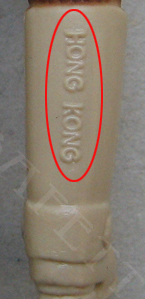
Country of Origin (COO)
The mould cavities were stamped with a COO denoting where the figure was produced. The earliest figures were either stamped “HONG KONG”, “MADE IN HONG KONG”, “TAIWAN” or “MADE IN TAIWAN”.
As the figure line grew and production locations expanded into mainland China, “MACAU” and “CHINA” COO figures were also produced in the later stages.
NO COO (No Country of Origin)
No COO figures were released around the Jedi era onwards. This is where the COO was either physically removed from the old HONG KONG moulds, OR in the case of some ROTJ and all POTF/Droids/Ewoks figures, there never was a COO stamped into the mould.
“Smooth” No COO

A smooth surface remaining where the letters of the previous COO existed.
Raised Bar
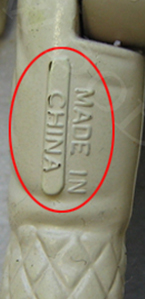
The previous COO is milled out in a single line, leaving a blank bar. In a few cases, a new China COO was then stamped onto the newly made blank raised bar to denote the change in production location for that figure.
Double Raised bar
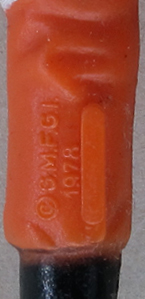
Previously, a single bar was used to remove the initial COO. There are a few characters where in a wave of very late production, a second, deeper bar was drilled into the mould to erase the “CHINA” stamp on the initial bar.
“Scarred” No COO
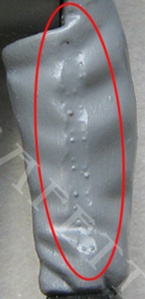
A layer of liquid metal filler was added over the original HK COO, masking out the letters. This method was only used in the PBP factory in Spain. Note the filler used wasn’t stable and it fell out in chunks requiring a number of repairs during the course of PBPs figure production.
“Mould”, “Mold”, “Mould”, “Tool”
These are all terms to describe the metal block which is used with an injection moulding machine to form plastic parts.
EPMs (Ejector Pin Mark)
In those cases where parts are difficult to eject from the mould efficiently, the toolmaker will add a series of pins that push the plastic parts from the tools cavity. The circular hole where the pin sits flush with the surface can leave an impression on the surface of the moulded part. This circular impression is called an “EPM”.
Flashing
During each plastic “shot”, an extreme amount of pressure is exerted into the mould in order to completely fill the cavity. If there is even the slightest space left along in seam between the moulds, molten plastic will flow into that gap. Once ejected, the part will show a thin, rough plastic edge that extends beyond the intended sculpt. Refer to “Seam or Parting line” below.
“Gate Scars” or “Gate”
The plastic parts were shot in multiples, which are attached to a “sprue tree”. Workers in the factory would cut or twist each part from the sprue tree. The cut/twist mark on the part is the “gate scar”. This is important to note, as reproduction accessories and figures don’t always follow the same position as the genuine item.
Melt Marks or “Melts”
During the sonic welding process, very high temperatures are produced from the operating machinery. Where a figure is poorly braced in the sonic welding machine, the loose parts can be exposed to heat on unintended areas. Melt marks to exposed areas can widely vary in size and location. Early PBP production is notorious for producing figures with melt marks.
Overstock
Where plastic parts and accessories were produced in excess of what was needed, Kenner very efficiently moved on these surplus overstock parts to another plant for use in their figure output. At the end of the vintage era, factories such as Lili Ledy ceased production and without any further purpose, the overstock parts were handed out to employees and school children. Overstock can be a combination of painted/unpainted, glued or unassembled loose figure parts.
Peg Holes
A hole in the foot of the figure which allows you to position it on a stand. Peg holes are not part of the sculpt within the cavity. To create this peg hole, the injection moulding machine operator will place two small metal pins into one half of the mould. In the case of Lili Ledy in Mexico, there are a number of figures which weren’t produced with peg holes, as the machine operator forgot to insert the pegs prior to initiating production.
Spray Mask
A frame designed to wrap snugly around a specific plastic part, exposing only the areas intended to be painted by a factory operator in a spray booth. A “slipped” spray mask is where the mask isn’t flush against the part and paint is mis-applied to the wrong area or unintended paint overspray occurs elsewhere across the surface.
Short Shot
A factory error where a part is produced with moulding defects as a result of the molten plastic not completely filling the cavity during the injection process. This can be a result of a too little amount of plastic injected into the cavity or inadequate temperature in the tool causing the molten plastic to cool prematurely.
Sonic Weld
Part of the assembly process where the torso halves are positioned in a mechanical bracket, which rapidly vibrates to create a heat and a fusion in along the joint where the plastic parts touch. A poor sonic weld (non-sonic welded) is where the welding process didn’t fully take hold and the torso halves are only partially fused together and easily separated.
Factory Error
Where a mistake occurs during the production process. This term can apply to tool-making, injection moulding, paint application, overspray, figure assembly, sonic welding or packaging. Mass production of the Star Wars line in the busy factories resulted in great variety of errors that have become quite desirable for collectors to acquire in recent years.
Glasslite
Glasslite produced 15 figures from the SW and Droids line for the Brazilian market. They were well-established with their own injection moulding operation. Glasslite imported moulds from Kenner’s Asian operations. Glasslite operated on a much later timeline to the other global licenses and production had completely ceased around the world. Many of the moulds used by Glasslite had already been altered in Asia and had their COOs already removed at this point.
Kader – Vendor Code “K”/”HG”
A Hong Kong based factory, which expanded production to China and Macau during the Jedi era. See “Qualidux” below. Kader was also another powerhouse producer, however their production was focused on the SW & ESB characters with limited run of the Jedi, POTF and Droids/Ewoks characters. Overall, Kader and it’s affiliates were responsible for production of the earliest SW characters through to the Droids line.
Lili Ledy
A Mexico City based factory which had a run of 50 figures with many sub-variants within their main line.
Due to protective trade laws of the time, in order to sell toys to the Mexican market, Kenner worked with the well established Mexico City based company “Lili Ledy”, to produce their figures. Lili Ledy achieved this initially by loaning/leasing moulds from Kenner’s HK based factories to use for injection moulding the figures in their factory. Due to the timing, Lili Ledy’s line is mostly ROTJ era characters.
Lili Ledy “Imperio Contraataca” or “Imperio”
This is an early ESB era wave of 10 figures which are thought to be a test batch for the Mexican market. These featured imported Kenner figures and accessories packed on unique LL cardbacks in Mexico.
Lili Ledy “El Retorno de Jedi” or “Retorno”
The first of the Jedi era waves of 12 to 14 figures produced at Lili Ledy. Retorno figures were created in Mexico with moulds supplied by Kenner.
Lili Ledy “El Regreso de Jedi” or “Regreso”
This title change represented a more accurate Spanish translation of the title “The Return of the Jedi”. This era continued from 14 characters right through to the end of the Lili Ledy era in the Mexico City factory with 50 characters in total.
Lili Ledy “Made in Mexico”
As part of the later stage cost-cutting, Kenner established a new factory in Tijuana on the Mexican side of the US/Mexico border. This was operated by the Mexican based Lili Ledy company. The 11 of the 13 figures produced at this factory had unique, newly created moulds for their limited line of characters. These figures were packaged with a mix of imported Asian and locally produced accessories. The figures were packed onto Lili Ledy cards for the Mexican market and Kenner cards for distribution across the US.
Poch/PBP/GMJ
In the early era, PBP painted and assembled imported figure parts from Asia. They produced 37 characters which are known in shorthand as “Poch” in collecting circles. Due to the nature of their operation and lack of quality control, the number of paint and part variations for Poch figures is limitless.
In the later era, PBP began injection moulding on site. They loaned/leased the moulds from Kenner, filled over the existing HK COOs, before going on to produce their own limited run of 29 characters (with many sub-variations within that total number). Due to the timing, PBP’s line is mostly characters from the SW & ESB era.
PBP imported a small line of complete figures from Lili Ledy in Mexico as well as a broader range of figures and accessories from the Asian factories to supplement their character range.
PBP exported their locally produced figures to the other European markets. Their Cantina figures were also packaged and sold in the US on the 77bk Kenner cards with a “Made in Spain” COO on the cardback.
Qualidux – (Possible) Vendor Code “ME”
A Macau based toy manufacturer with executive associations to the Kader Holdings group (See “Kader” above). Qualidux were a late addition the production line-up and received tooling from Kader Hong Kong to produce their figure line.
Smile – Vendor Code “S”/”HN”
A Hong Kong based factory, which expanded production to Macau during the Jedi era. Probably the most prolific vendor among the Asian producers. Smile had the great variety of characters and were responsible for production of the earliest SW characters right through to the Ewoks line.
Takara
Japanese based toy producers, Takara operated their line with a combination of imported Kenner produced SW figures and 3 locally produced figures which have completely unique sculpts.
Top Toys
Argentine based “Top Toys” had a limited run of 7 characters from the SW line. Top Toys created their own moulds made from casts of the original Kenner figures, hence why they’re marginally shorter than their Kenner counterparts. The Top Toy accessories are a combination of new sculpts and casts of the Kenner produced parts. The quality of the figures produced was exceptionally low and have a bootleg quality to them.
Unitoy – Vendor Code “U”/”HT”
A Hong Kong based factory. Unitoy were involved with production of characters from the earliest SW characters right though to the Ewoks line. They did transfer the production of their SW & ESB characters to Kader at the end of the ESB era.
Universal Manufacturers – Vendor Code “TJ”
A Taiwanese based factory which was brought in to expand the production base of the Jedi line with a limited run of only 12 characters. It’s not yet known if Universal Manufacturers is responsible for the early era of Taiwan based SW figure production.
Written from the perspective vintage figures only. Many of these companies produced and distributed SW products which extended greatly beyond the just their line of figures.
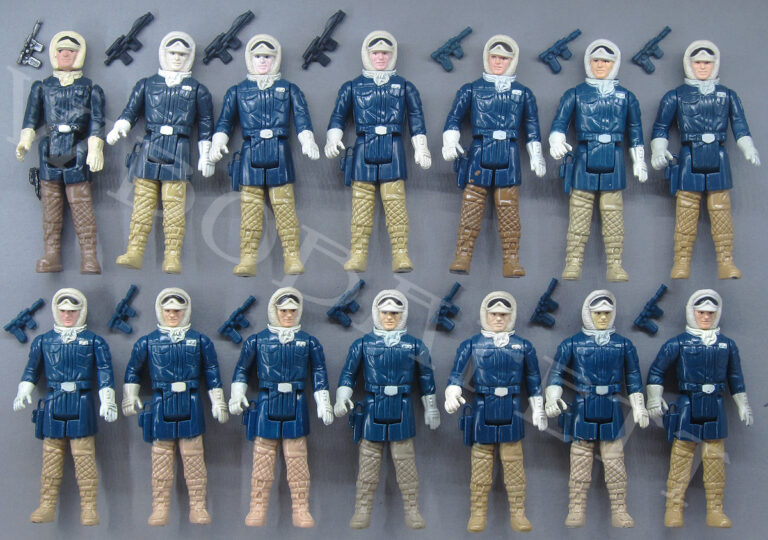
Basa
A Peruvian based license that imported a small range of Kenner ESB era cardbacks, Micro Collection pieces and produced two original large size action figures. They can be identified from a small Basa logo sticker applied in the top right corner.
Brio/Play Mix
An Swedish based license that packaged imported Palitoy MOCs for distribution across their national market.
Clipper
A Netherlands based license, which distributed Palitoy and PBP MOCs and applied Clipper branded stickers before national distribution.
Harbert
An Italian based license who imported packaged Star Wars era figures and distributed them nationally on Herbert branded cardbacks.
Edilio Parodi
An Italian based company who imported Return of the Jedi era figures.
Kenner Canada
A Canadian based license that packaged imported Asian produced figures before distributing them nationally on Kenner branded cardbacks with French/English text and Canadian return details.
Meccano
Early on, Meccano imported Asian produced figures and packaged at their Calais based operation. In the Jedi era, Meccano imported figures from the Asian factories operating in Macau & China, plus a limited group of figures from PBP in Spain, before packaging internally for national distribution. Meccano was the only license which went to the trouble of applying the “Made in Macau” sticker to their cards. Palitoy baggies were also a source of figures in the later stages.
Palitoy
Palitoy in the United Kingdom had the distribution rights for Star Wars figures across Europe. From their operations in Coalville, they distributed UK & French produced injection-moulded creatures and vehicles, plus designed and produced cardboard playsets. Palitoy also oversaw large scale packaging of imported Asian and Spanish figures onto Palitoy cards and distribution in the UK market.
Parker
A German based license which distributed Trilogo MOCs and locally packaged POTF 3 packs.
Playthings
The Singaporean based license for Star Wars toys.
Popy
A distributor who oversaw distribution of the ESB line to the Japanese market. Popy are most notable for their packaging which was in the form of a small cardboard box with a unique graphic design specific for the Japanese market. The figures were imported from the HK based Asian factories.
Toltoys
An Australian based license that packaged imported Asian produced figures before distributing them nationally.
Toltoys NZ
An New Zealand based subsidiary of Toltoys Australia who packaged imported Asian produced figures before distributing nationally.
Tsukuda
A license who managed the ROTJ line in the Japanese market. Kenner MOCs were imported before having a Tsukuda sticker applied and distributed nationally.
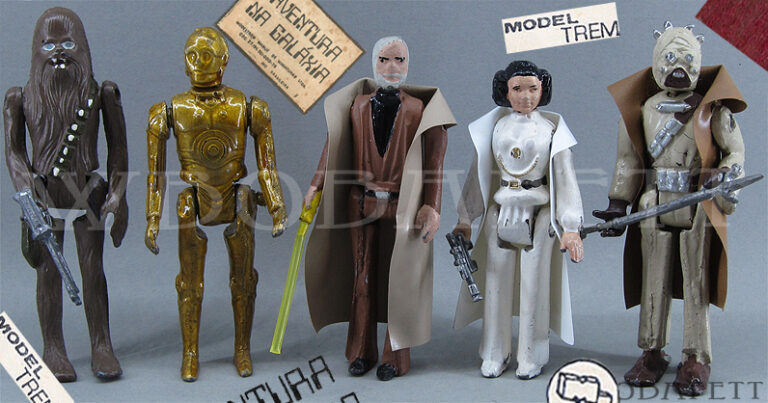
Bootlegs
During the late 70s and early 80s, for a variety of geopolitical and commercial reasons, many countries across the world didn’t have access to licensed Star Wars toys. In these cases, entrepreneurial operators stepped up and produced low-cost SW toys which were an alternative to the children of those countries. As there was no license obtained by the producers, these toys have earned the title of “Bootlegs”. The hobby rightly views these as legitimate vintage items. Bootlegs can be easily differentiated from the original Kenner line and are not to be confused with recently made “Copycat” or “Reproduction” figures which are intended to deceive collectors.
“Unarticulated” or “Static” figures
Low-quality figures which are shot in a single form without movable joints or head. Typically made from rubber or a hard plastic and can be either crudely injection moulded.
“Semi-articulated” or “S/A” figures
A figure which usually has ball joints on the torso shoulders which via an socket allow the arms to articulate.
“Fully-articulated” or “F/A” figures
A figure with joints and sockets engineered into both arms, legs and sometimes the head allowing for complete poseability.
“Knock-off”
The term “knock-off” in the SW context is unlicensed toys or ephemera which contain similar traits to SW characters, but were just different enough to avoid copyright issues. The similarities may include packaging, graphic design, character design, sound effects or naming.
“Copycat” figures
A recent phenomenon which refers to recently produced figures which are made in the style of vintage bootleg pieces. These are usually made from cheap resins or rubber, in a range of colours and span across a variety of SW and related characters. In some cases, the original moulds have been used to produce these copycats figures.
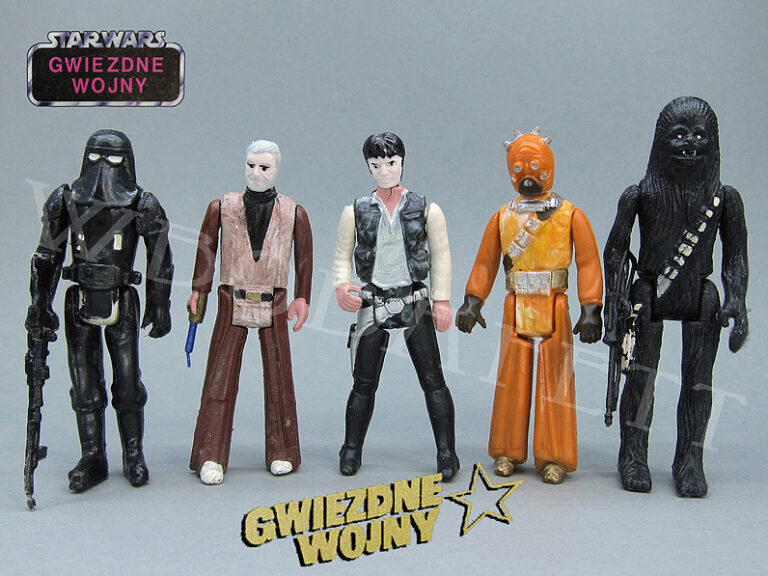
Csillagok Haboruja (Hungarian)
Produced in communist Hungary in the 80s. A set of 10 poorly made figures based on from popular SW & ESB characters, plus a short set of 3 characters from another operation.
Mexico
Many different independent bootlegging operators worked in Mexico during the 80s (and 90s beyond) producing a wide range of toys from across the SW, Empire, Jedi and POTF lines. The range of toys varied in quality and style, from static, unarticulated through to fully-articulated figurines. The colours ranged from screen accurate to wildly colourful figurines.
Uzay (Turkish)
SB Products in the late 80s produced a set of 15 well made bootleg toys which were available in Turkish corner stores as a cheap alternative to the expensive licensed production Kenner figures. There are a number of paint variations within this run.
Gwiezdne Wojny (Polish)
In the 1980s, western SW figures weren’t available to children under communist ruled Poland. Over a period of roughly ten years, a number of enterprising injection plastic operators created figures to meet that demand. The main figure variations are the fully-articulated “Early”, 1st, 2nd and 3rd generations, the “Deluxe” line, and lastly the unarticulated rubber and the infamous “Poker Cape” series.
Model Trem (Brazilian)
Before Glasslite obtained the SW license in Brazil in the late 80s, a local toy producer in San Paolo crafted this wonderful and infamous line of SW and SW look-a-like figures from materials such as lead and resin.
